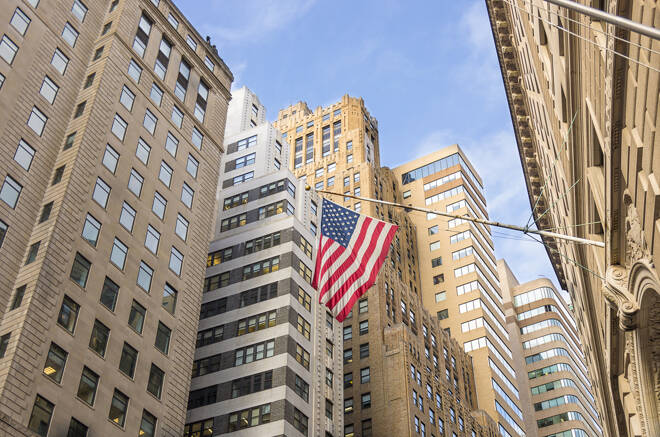Advertisement
Advertisement
Consumers Will Cause A Recession And A Bear Market
Published: Oct 26, 2021, 07:13 GMT+00:00
Economists and strategists have been focusing recently on the GDP model of the St. Louis Fed because it provides a real-time assessment of the US economy.
Summary
- Analysts expect continued growth in earnings.
- However, inflation is rapidly eroding consumers’ purchasing power.
- The decline in demand will cause business to become defensive.
In a recent release of the Atlanta Fed, their model measured GDP growth in Q3 of 0.5%, down from 33.8% in Q3 2020. The decline has been relentless but unnoticed given the amount of liquidity thrown by the Fed to the problem.
The issue is – where do we go from here? Can the US economy strengthen and grow at a faster pace?
The answer is in the hands of consumers since they are 70% of the economy. Consumers’ sentiment is closely tied to the business cycle and its leading, coincident, and lagging indicators.
The behavior of the consumer is measured by the survey of the University of Michigan. The most popular is the survey of consumer sentiment shown below.
As you can see from the above chart, consumer sentiment is a reliable leading indicator of recessions (shaded areas). Peaks in consumer sentiment have invariably led poor business activity or recessions.
How can we use the relationship between leading, coincident, and lagging indicators to predict turning points in consumer confidence and in the economy?
The important, and mostly overlooked, lagging indicator provides the answer. The graphs show an increase in the lagging indicators (inflation, interest rates, change in home prices) is followed by a peak in the leading indicators (consumer sentiment). The reason is rising inflation and home prices severely hinder consumers’ purchasing power.
The outcome is lower spending for goods and services (all coincident indicators). Because of weaker consumer spending, the economy slows down and may even contract.
When will consumers start to increase spending again, thus stimulating the growth of the economy? The answer is when consumers’ purchasing power increases because of declining inflation, interest rates, and home prices.
The lagging indicators have a crucial role in determining the length of the business cycle. They usually rise after one-to-two years following the beginning of an expansion. The sooner they rise, the shorter the duration of the business cycle will be because of the negative impact on the purchasing plans of the consumers.
Inflation is still rising at a rapid clip (see above chart). Home prices are up +19.7%. Producer prices soared +11.8%. Consumer prices jumped +5.4%. Rising inflation has sharply reduced consumers’ real disposable personal income which has declined in four of the last five months.
These trends suggest business activity cannot improve unless inflation, interest rates, and home prices decline enough to improve consumers’ sentiment and their purchasing power. Or, to put it in another way, the current economic slowdown will continue until there is a visible decline in the lagging indicators. Only then will the economy resume to grow at a faster pace.
Stock prices are also an important leading indicator of the economy, and their trend is in fact closely related to consumer sentiment as shown in the chart below.
Important takeaways
- Consumer sentiment has declined sharply because of the loss of consumers’ purchasing power caused by rising inflation, interest rates, and home prices.
- The economy has displayed a sharp deceleration since 2020 despite the engineered generous stimulus programs of the government.
- The decline in consumer sentiment will have a negative effect on the economy, earnings, and stocks.
- Consumer sentiment will improve after a visible decline in inflation, interest rates, and home prices. Until then, business activity and equity prices will struggle.
- There is nothing the Fed can do about what is likely to happen. They can only make matters worse by encouraging higher short-term interest rates.
About the Author
George Dagnino, PHDcontributor
George Dagnino, PhD, is chairman of Peter Dag Strategic Money Management. As the former chief economist and risk manager for Goodyear, he managed $4 billion of interest rates and currency hedge portfolios.
Advertisement
